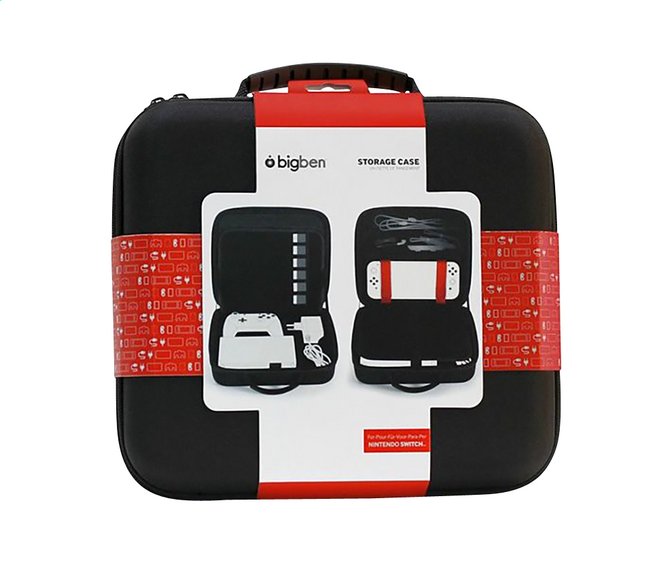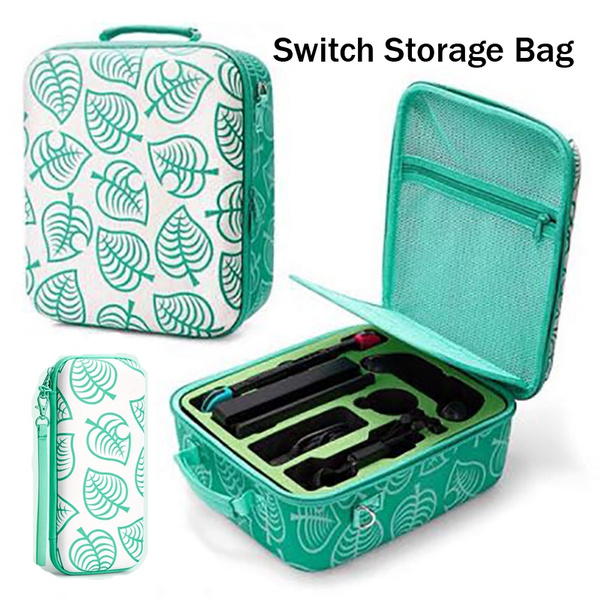With incredible speed, the officially licensed SanDisk® microSDXC card for the Nintendo Switch console lets you add 256GB of space to your system. Spend less time waiting and more time gaming with read and write speeds of up to 100MB/s and 90MB/s respectively.
Ryan O’Keefe has eight years of experience working full time in the energy storage industry from all aspects of the value chain, and over 20 years of experience in the electric power industry with the majority of this time working with clean and renewable energy sources. Ryan holds a Bachelor of Science Degree in Electrical Engineering from the University of Connecticut and an MBA from Columbia University in New York. Ryan began his career on GE’s Leadership Development Program and spent 14 years with GE in the Power, Capital, and International business units in the US and Mexico. He then joined NextEra Energy where he invested eight years in senior leadership positions including Vice President of Solar Development. During his tenure at NextEra, Mr. O’Keefe successfully started and led several new ventures including the company’s entry into Canada, solar and the energy storage markets. He then joined energy-storage start-up Younicos as Senior Vice President and Chief Revenue Officer where he led top line growth including sales, product development, product marketing, and regulatory affairs. Ryan was then appointed as Executive Officer and SVP, Business Development at Ideal Power, a publicly traded company and recognized leader in the C&I energy storage inverter market. Presently, Ryan is the business unit leader responsible for energy storage and solar at Orsted, a globally recognized leader in clean energy. Ryan lives in Austin, Texas with his wife and three children.
View all results for Nintendo Switch Cases & Storage. Search our huge selection of new and used Nintendo Switch Cases & Storage at fantastic prices at GameStop. Game Storage Case for Nintendo Switch. Nintendo Switch. $9.99 Select Condition For Availability Expected Date:. Ultimate Case XL for Nintendo Switch. Nintendo Switch (17) New. $14.99 Select Condition For Availability The Legend of Zelda: Breath of the Wild Premium Console Case for Nintendo Switch.
Why Switch?
In his work in energy storage over the years Ryan noticed that many solution providers have made the product offering overly complicated. For energy storage to scale, customers need access to strraightforward, reliable, and affordable products that can be made to work in different markets for different applications. Switch is exactly that, a straightforward, affordable product that uses best in class components to deliver value.
-->Azure Storage always stores multiple copies of your data so that it is protected from planned and unplanned events, including transient hardware failures, network or power outages, and massive natural disasters. Redundancy ensures that your storage account meets the Service-Level Agreement (SLA) for Azure Storage even in the face of failures.
Azure Storage offers the following types of replication:
- Locally redundant storage (LRS)
- Zone-redundant storage (ZRS)
- Geo-redundant storage (GRS) or read-access geo-redundant storage (RA-GRS)
- Geo-zone-redundant storage (GZRS) or read-access geo-zone-redundant storage (RA-GZRS)
For an overview of each of these options, see Azure Storage redundancy.
Switch between types of replication
You can switch a storage account from one type of replication to any other type, but some scenarios are more straightforward than others. If you want to add or remove geo-replication or read access to the secondary region, you can use the Azure portal, PowerShell, or Azure CLI to update the replication setting. However, if you want to change how data is replicated in the primary region, by moving from LRS to ZRS or vice versa, then you must perform a manual migration.
The following table provides an overview of how to switch from each type of replication to another:
| Switching | …to LRS | …to GRS/RA-GRS | …to ZRS | …to GZRS/RA-GZRS |
|---|---|---|---|---|
| …from LRS | N/A | Use Azure portal, PowerShell, or CLI to change the replication setting1,2 | Perform a manual migration OR Request a live migration | Perform a manual migration OR Switch to GRS/RA-GRS first and then request a live migration1 |
| …from GRS/RA-GRS | Use Azure portal, PowerShell, or CLI to change the replication setting | N/A | Perform a manual migration OR Switch to LRS first and then request a live migration | Perform a manual migration OR Request a live migration |
| …from ZRS | Perform a manual migration | Perform a manual migration | N/A | Request a live migration |
| …from GZRS/RA-GZRS | Perform a manual migration | Perform a manual migration | Use Azure portal, PowerShell, or CLI to change the replication setting | N/A |
1 Incurs a one-time egress charge.
2 Migrating from LRS to GRS is not supported if the storage account contains blobs in the archive tier.
3 Conversion from ZRS to GZRS/RA-GZRS or vice versa is not supported in the following regions: US East 2, US East, Europe West.
Caution
If you performed an account failover for your (RA-)GRS or (RA-)GZRS account, the account is locally redundant (LRS) in the new primary region after the failover. Live migration to ZRS or GZRS for an LRS account resulting from a failover is not supported. This is true even in the case of so-called failback operations. For example, if you perform an account failover from RA-GZRS to the LRS in the secondary region, and then configure it again to RA-GRS and perform another account failover to the original primary region, you can't contact support for the original live migration to RA-GZRS in the primary region. Instead, you'll need to perform a manual migration to ZRS or GZRS.
Change the replication setting
You can use the Azure portal, PowerShell, or Azure CLI to change the replication setting for a storage account, as long as you are not changing how data is replicated in the primary region. If you are migrating from LRS in the primary region to ZRS in the primary region or vice versa, then you must perform either a manual migration or a live migration.
Changing how your storage account is replicated does not result in down time for your applications.
To change the redundancy option for your storage account in the Azure portal, follow these steps:
- Navigate to your storage account in the Azure portal.
- Select the Configuration setting.
- Update the Replication setting.
To change the redundancy option for your storage account with PowerShell, call the Set-AzStorageAccount command and specify the -SkuName parameter:
4l60e transmission for sale in arizona. Heavy Duty 4L60E Transmission, Performance 4L60E Transmission, 4L60-E Transmission, 4L60E Monster Transmission, 4L60E Truck Transmission. The 4L60E (and similar 4L65E) is a series of automatic transmissions from General Motors. Designed for longitudinal engine configurations, the series includes 4 forward gears and 1 reverse gear. It is an evolution of the Turbo-Hydramatic 700R4, originally produced in 1982.
To change the redundancy option for your storage account with Azure CLI, call the az storage account update command and specify the --sku parameter:
Perform a manual migration to ZRS, GZRS, or RA-GZRS
If you want to change how data in your storage account is replicated in the primary region, by moving from LRS to ZRS or vice versa, then you may opt to perform a manual migration. A manual migration provides more flexibility than a live migration. You control the timing of a manual migration, so use this option if you need the migration to complete by a certain date.
When you perform a manual migration from LRS to ZRS in the primary region or vice versa, the destination storage account can be geo-redundant and can also be configured for read access to the secondary region. For example, you can migrate an LRS account to a GZRS or RA-GZRS account in one step. Homebrew tap.
A manual migration can result in application downtime. If your application requires high availability, Microsoft also provides a live migration option. A live migration is an in-place migration with no downtime.
With a manual migration, you copy the data from your existing storage account to a new storage account that uses ZRS in the primary region. To perform a manual migration, you can use one of the following options:
- Copy data by using an existing tool such as AzCopy, one of the Azure Storage client libraries, or a reliable third-party tool.
- If you're familiar with Hadoop or HDInsight, you can attach both the source storage account and destination storage account account to your cluster. Then, parallelize the data copy process with a tool like DistCp.

Request a live migration to ZRS, GZRS, or RA-GZRS
If you need to migrate your storage account from LRS to ZRS in the primary region with no application downtime, you can request a live migration from Microsoft. To migrate from LRS to GZRS or RA-GZRS, first switch to GRS or RA-GRS and then request a live migration. Similarly, you can request a live migration from GRS or RA-GRS to GZRS or RA-GZRS. To migrate from GRS or RA-GRS to ZRS, first switch to LRS, then request a live migration.
During a live migration, you can access data in your storage account with no loss of durability or availability. The Azure Storage SLA is maintained during the migration process. There is no data loss associated with a live migration. Service endpoints, access keys, shared access signatures, and other account options remain unchanged after the migration.
ZRS supports general-purpose v2 accounts only, so make sure to upgrade your storage account before you submit a request for a live migration to ZRS. For more information, see Upgrade to a general-purpose v2 storage account. A storage account must contain data to be migrated via live migration.
Live migration is supported only for storage accounts that use LRS or GRS replication. If your account uses RA-GRS, then you need to first change your account's replication type to either LRS or GRS before proceeding. This intermediary step removes the secondary read-only endpoint provided by RA-GRS before migration.
While Microsoft handles your request for live migration promptly, there's no guarantee as to when a live migration will complete. If you need your data migrated to ZRS by a certain date, then Microsoft recommends that you perform a manual migration instead. Generally, the more data you have in your account, the longer it takes to migrate that data.
You must perform a manual migration if:
- You want to migrate your data into a ZRS storage account that is located in a region different than the source account.
- Your storage account is a premium page blob or block blob account.
- You want to migrate data from ZRS to LRS, GRS or RA-GRS.
- Your storage account includes data in the archive tier.

You can request live migration through the Azure Support portal.
Important

If you need to migrate more than one storage account, create a single support ticket and specify the names of the accounts to convert on the Details tab.
Follow these steps to request a live migration:
In the Azure portal, navigate to a storage account that you want to migrate.
Under Support + troubleshooting, select New Support Request.
Complete the Basics tab based on your account information:
- Issue type: Select Technical.
- Service: Select My Services, then Storage Account Management.
- Resource: Select a storage account to migrate. If you need to specify multiple storage accounts, you can do so in the Details section.
- Problem type: Choose Data Migration.
- Problem subtype: Choose Migrate to ZRS, GZRS, or RA-GZRS.
Select Next. On the Solutions tab, you can check the eligibility of your storage accounts for migration.
Select Next. If you have more than one storage account to migrate, then on the Details tab, specify the name for each account, separated by a semicolon.
Fill out the additional required information on the Details tab, then select Review + create to review and submit your support ticket. A support person will contact you to provide any assistance you may need.
Nintendo Switch Storage Card
Note
Premium file shares (FileStorage accounts) are only available for LRS and ZRS.
GZRS storage accounts do not currently support the archive tier. See Azure Blob storage: hot, cool, and archive access tiers for more details.
Managed disks are only available for LRS and cannot be migrated to ZRS. You can store snapshots and images for standard SSD managed disks on standard HDD storage and choose between LRS and ZRS options. For information about integration with availability sets, see Introduction to Azure managed disks.
Switch from ZRS Classic
Important
Microsoft will deprecate and migrate ZRS Classic accounts on March 31, 2021. More details will be provided to ZRS Classic customers before deprecation.
After ZRS becomes generally available in a given region, customers will no longer be able to create ZRS Classic accounts from the Azure portal in that region. Using Microsoft PowerShell and Azure CLI to create ZRS Classic accounts is an option until ZRS Classic is deprecated. For information about where ZRS is available, see Azure Storage redundancy.
ZRS Classic asynchronously replicates data across data centers within one to two regions. Replicated data may not be available unless Microsoft initiates failover to the secondary. A ZRS Classic account can't be converted to or from LRS, GRS, or RA-GRS. ZRS Classic accounts also don't support metrics or logging.
ZRS Classic is available only for block blobs in general-purpose V1 (GPv1) storage accounts. For more information about storage accounts, see Azure storage account overview.

To manually migrate ZRS account data to or from an LRS, GRS, RA-GRS, or ZRS Classic account, use one of the following tools: AzCopy, Azure Storage Explorer, PowerShell, or Azure CLI. You can also build your own migration solution with one of the Azure Storage client libraries.
You can also upgrade your ZRS Classic storage account to ZRS by using the Azure portal, PowerShell, or Azure CLI in regions where ZRS is available.

To upgrade to ZRS in the Azure portal, navigate to the Configuration settings of the account and choose Upgrade:
To upgrade to ZRS using PowerShell, call the following command:
Switch Storage
To upgrade to ZRS using Azure CLI, call the following command: Autocom delphi 2017 download mega.
Costs associated with changing how data is replicated
The costs associated with changing how data is replicated depend on your conversion path. Ordering from least to the most expensive, Azure Storage redundancy offerings include LRS, ZRS, GRS, RA-GRS, GZRS, and RA-GZRS.
For example, going from LRS to any other type of replication will incur additional charges because you are moving to a more sophisticated redundancy level. Migrating to GRS or RA-GRS will incur an egress bandwidth charge because your data (in your primary region) is being replicated to your remote secondary region. This charge is a one-time cost at initial setup. After the data is copied, there are no further migration charges. For details on bandwidth charges, see Azure Storage Pricing page.
If you migrate your storage account from GRS to LRS, there is no additional cost, but your replicated data is deleted from the secondary location.
Switch Storage Card
Important
If you migrate your storage account from RA-GRS to GRS or LRS, that account is billed as RA-GRS for an additional 30 days beyond the date that it was converted.
See also
